Several US guards allege they witnessed military-intelligence operatives encouraging the abuse of Iraqi prison inmates at four prisons other than Abu Ghraib, investigative documents show.
Court transcripts and Army investigator interviews provide the broadest view of evidence that abuses, from forcing inmates to stand in hoods in 49oC heat to punching them, occurred at a Marine detention camp and three Army prison sites in Iraq besides Abu Ghraib.
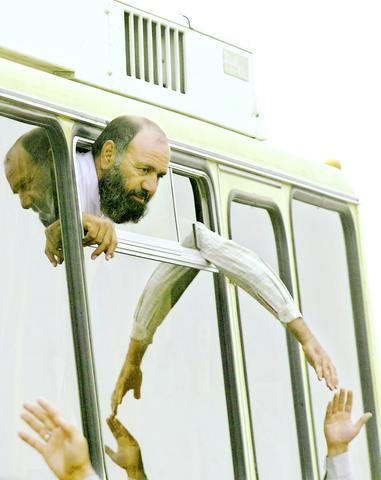
PHOTO: AFP
Testimony about tactics used at a Marine prisoner-of-war camp near Nasiriyah also raises the question whether coercive techniques were standard procedure for military intelligence units in different service branches and throughout Iraq.
At the Marines' facility Camp Whitehorse, the guards were told to keep enemy prisoners of war -- EPWs, in military jargon -- standing for 50 minutes each hour for up to 10 hours. They would then be interrogated by "human exploitation teams," or HETs, comprising intelligence specialists.
"The 50/10 technique was used to break down the EPWs and make it easier for the HET member to get information from them," Marine Corporal Otis Antoine, a guard at Camp Whitehorse, testified at a military court hearing in February.
US military officials say US troops in Iraq are required to follow the Geneva Conventions on prisoners of war for all detainees in Iraq. Those conventions prohibit "physical or moral coercion" or cruel treatment.
The Army's intelligence chief told a US Senate panel this month that intelligence soldiers are trained to follow Geneva Convention rules strictly.
"Our training manuals specifically prohibit the abuse of detainees, and we ensure all of our soldiers trained as interrogators receive this training," Lieutenant General Keith Alexander told the Senate Armed Services Committee.
Violation
The Marine Corps judge hearing the Camp Whitehorse case wrote that forcing hooded, handcuffed prisoners to stand for 50 minutes every hour in the 49oC desert could be a Geneva Convention violation. Colonel William Gallo wrote that such actions "could easily form the basis of a law of war violation if committed by an enemy combatant."
Two Marines face charges over the death of Nagem Sadoon Hatab at Camp Whitehorse last June, although no one is charged with killing him. Military records say Hatab was asphyxiated when a Marine guard grabbed his throat in an attempt to move him, accidentally breaking a bone that cut off his air supply. Another Marine is charged with kicking Hatab in the chest in the hours before his death.
Army Major General George Fay is finishing an investigation into military-intelligence management and practices at Abu Ghraib and elsewhere in Iraq. Alexander and other top military-intelligence officials say they never gave orders that would have encouraged abuses.
"If we have a problem, if it is an intel oversight problem, if it is an MP [military police] problem or if it's a leadership problem, we have to get to the bottom of this," Alexander told the Senate panel.
Encouraged
Most of the seven enlisted soldiers charged in the Abu Ghraib abuses say they were encouraged to "soften up" prisoners for interrogators through humiliation and beatings. Several witnesses also report seeing military-intelligence operatives hit Abu Ghraib prisoners, strip them naked and order them to be kept awake for long periods.
Other charges leveled against military-intelligence troops include stuffing an Iraqi general into a sleeping bag, sitting on his chest and covering his mouth during an interrogation at a prison camp at Qaim, near the border with Syria. The general died during that interrogation, although he also had been questioned by CIA operatives in the days before his death.
Detainees at an Army prison camp near Samarra, north of Baghdad, were said to have been choked and beaten and to have had their hair pulled. Prisoners are also alleged to have been placed in painful positions for hours at Camp Cropper, a prison at Baghdad International Airport for prominent former Iraqi officials.
Military officials say they are investigating all of those incidents.
One focus of the incident at Qaim is Chief Warrant Officer Lewis Welshover, an interrogator with the 66th Military Intelligence Group.
Welshover was part of a two-person interrogation team that questioned Iraqi Air Force Major General Abed Hamed Mowhoush, 57. Military autopsy records say Mowhoush was asphyxiated by chest compression and smothering.
Army officials say members of a California Army National Guard military-intelligence unit are accused of abusing prisoners at a camp near Samarra, north of Baghdad. The New York Times has reported that those accusations include pulling prisoners' hair, beating them and choking them to force them to give information.
The Red Cross complained to the military in July that Camp Cropper inmates had been kept in painful "stress positions" for up to four hours and had been struck by military-intelligence soldiers.
One of the military-intelligence soldiers interviewed in the Abu Ghraib probe claimed some prisoners were beaten before they arrived at Camp Cropper.
Corporal Robert Bruttomesso of the 325th Military Intelligence Battalion told Army investigators he reported that abuse to his chain of command. The report of his interview does not include details on what action, if any, Bruttomesso's commanders took.
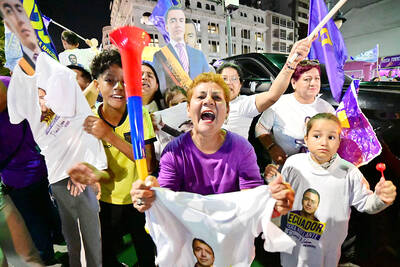
Incumbent Ecuadoran President Daniel Noboa on Sunday claimed a runaway victory in the nation’s presidential election, after voters endorsed the young leader’s “iron fist” approach to rampant cartel violence. With more than 90 percent of the votes counted, the National Election Council said Noboa had an unassailable 12-point lead over his leftist rival Luisa Gonzalez. Official results showed Noboa with 56 percent of the vote, against Gonzalez’s 44 percent — a far bigger winning margin than expected after a virtual tie in the first round. Speaking to jubilant supporters in his hometown of Olon, the 37-year-old president claimed a “historic victory.” “A huge hug
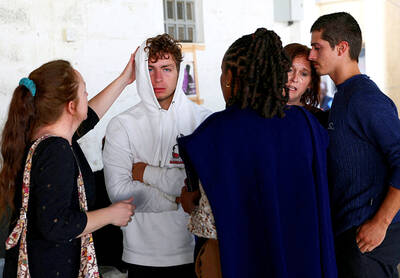
Two Belgian teenagers on Tuesday were charged with wildlife piracy after they were found with thousands of ants packed in test tubes in what Kenyan authorities said was part of a trend in trafficking smaller and lesser-known species. Lornoy David and Seppe Lodewijckx, two 19-year-olds who were arrested on April 5 with 5,000 ants at a guest house, appeared distraught during their appearance before a magistrate in Nairobi and were comforted in the courtroom by relatives. They told the magistrate that they were collecting the ants for fun and did not know that it was illegal. In a separate criminal case, Kenyan Dennis
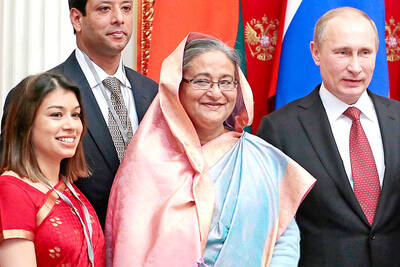
A judge in Bangladesh issued an arrest warrant for the British member of parliament and former British economic secretary to the treasury Tulip Siddiq, who is a niece of former Bangladeshi prime minister Sheikh Hasina, who was ousted in August last year in a mass uprising that ended her 15-year rule. The Bangladeshi Anti-Corruption Commission has been investigating allegations against Siddiq that she and her family members, including Hasina, illegally received land in a state-owned township project near Dhaka, the capital. Senior Special Judge of Dhaka Metropolitan Zakir Hossain passed the order on Sunday, after considering charges in three separate cases filed
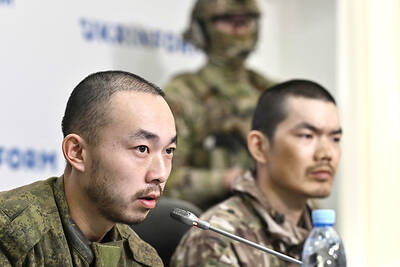
APPORTIONING BLAME: The US president said that there were ‘millions of people dead because of three people’ — Vladimir Putin, Joe Biden and Volodymyr Zelenskiy US President Donald Trump on Monday resumed his attempts to blame Ukrainian President Volodymyr Zelenskiy for Russia’s invasion, falsely accusing him of responsibility for “millions” of deaths. Trump — who had a blazing public row in the Oval Office with Zelenskiy six weeks ago — said the Ukranian shared the blame with Russian President Vladimir Putin, who ordered the February 2022 invasion, and then-US president Joe Biden. Trump told reporters that there were “millions of people dead because of three people.” “Let’s say Putin No. 1, but let’s say Biden, who had no idea what the hell he was doing, No. 2, and